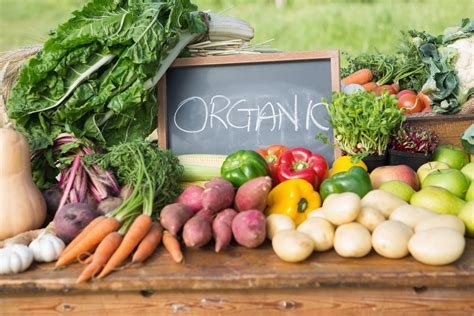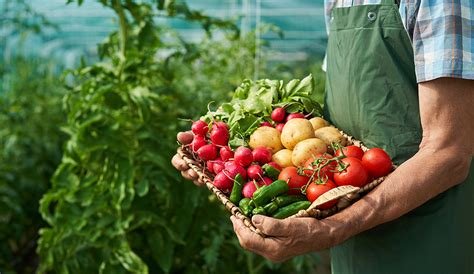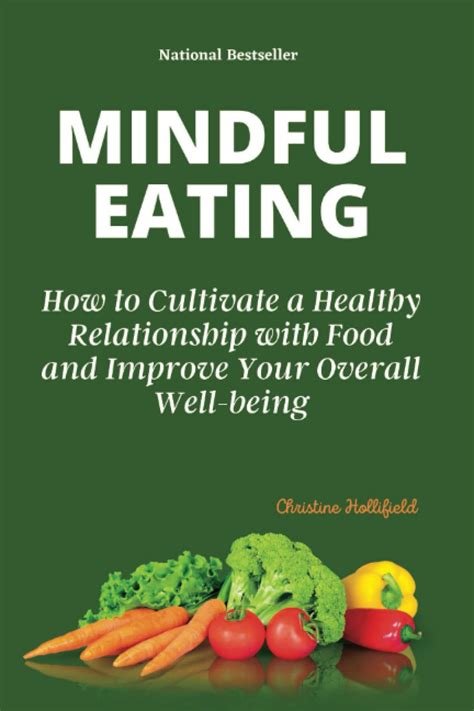How to Grow Your Own Organic Vegetable Garden: A Beginner’s Handbook
Are you interested in starting your own organic vegetable garden but don’t know where to begin? Look no further! In this beginner’s handbook, we will cover everything you need to know to successfully grow your own organic vegetables right in your backyard. From the benefits of growing organically to choosing the right location for your garden and selecting the best seeds and seedlings, we’ve got you covered. We’ll also discuss soil preparation, pest control, natural fertilizers, proper watering techniques, maintaining a clean garden bed, harvesting and storing your vegetables, as well as tips for planning and rotating crops. Whether you’re a seasoned gardener looking to transition to organic methods or a beginner with a green thumb, this guide will set you on the path to a bountiful and sustainable organic vegetable garden. Let’s get started!
Benefits of Growing an Organic Vegetable Garden
One of the main benefits of growing an organic vegetable garden is the ability to provide your family with fresh, nutritious produce. By growing your own vegetables, you can ensure that they are free from harmful pesticides and chemicals, making them a healthy choice for your meals.
Another advantage of having an organic garden is the opportunity to reduce your carbon footprint. By growing your vegetables at home, you can eliminate the need for them to be transported long distances, reducing the environmental impact of your food consumption.
Furthermore, cultivating an organic vegetable garden can also be a great way to save money. By growing your produce, you can cut down on your grocery expenses and enjoy the satisfaction of harvesting your own food.
Finally, tending to an organic garden can also be a rewarding and therapeutic experience. Spending time outdoors, connecting with nature, and watching your plants grow and develop can provide a sense of fulfillment and well-being.
Choosing the Right Location for Your Garden
When it comes to starting a vegetable garden, choosing the right location is crucial for the success of your plants. The first thing to consider is the amount of sunlight the location receives. Most vegetable plants need at least 6 hours of direct sunlight each day, so it’s important to pick a spot that meets this requirement. Observe your yard throughout the day to determine which areas get the most sunlight.
Another important factor to consider is the soil type and quality. The ideal soil for a garden is well-draining, loamy soil that is rich in organic matter. You can perform a simple soil test to check the pH and nutrient levels of the soil in different areas of your yard. This will help you determine the best location for planting your vegetables.
It’s also essential to consider the proximity of your garden to a water source. Vegetables need regular watering, especially during hot, dry weather. If you have to drag a hose across your yard to reach the garden, you may be less likely to keep up with the watering needs of your plants. Try to choose a location that is close to a water source, such as a spigot or rain barrel.
Finally, take into account potential hazards in the area, such as strong winds, flooding, or nearby trees that could block sunlight. By carefully evaluating these factors, you can choose the right location for your garden and set your plants up for success.
Preparing the Soil for Planting
Before you start planting your organic vegetable garden, it’s important to prepare the soil properly to ensure that your plants will thrive. One of the first steps in preparing the soil is to remove any weeds and debris from the area. This will help to create a clean and healthy environment for your plants to grow.
Next, you’ll want to test the soil to determine its pH level and nutrient content. There are many at-home soil testing kits available, or you can send a sample to a lab for analysis. Once you know the soil’s properties, you can amend it as necessary to create the ideal growing conditions for your vegetables.
Adding organic matter such as compost or manure to the soil can help to improve its structure and fertility. This will provide essential nutrients and beneficial microorganisms that are necessary for healthy plant growth.
Finally, it’s important to thoroughly mix and aerate the soil to ensure that the amendments are well distributed. This will create a uniform growing medium that will support strong, healthy plant roots and promote overall plant health.
Selecting the Best Organic Seeds and Seedlings
When it comes to starting your organic garden, one of the most important decisions you will make is selecting the right seeds and seedlings. Organic seeds and seedlings are essential for maintaining a chemical-free garden, and they can also help to promote biodiversity and support the local ecosystem.
Before you start selecting your seeds and seedlings, it’s important to do some research on the types of plants that grow best in your specific climate and soil type. Some plants may be more suited to your local environment, and it’s essential to select varieties that will thrive in your garden.
Another important factor to consider when selecting organic seeds and seedlings is to look for suppliers that are certified organic. This certification ensures that the seeds and seedlings have been produced without the use of synthetic pesticides, herbicides, or fertilizers. It also means that the seeds have not been genetically modified. By choosing certified organic seeds and seedlings, you can be sure that you are starting your garden on the right foot.
Lastly, consider looking for heirloom varieties and open-pollinated seeds. These types of seeds are usually more resilient and can often be saved year after year, reducing the need to purchase new seeds each season. By selecting the best organic seeds and seedlings for your garden, you can ensure a healthy and environmentally-friendly start to your growing season.
Organic Pest Control Techniques for Gardeners
When it comes to organic pest control techniques for your garden, it’s important to prioritize natural solutions that won’t harm the environment or the health of your plants. One effective method is to encourage natural predators, such as ladybugs, lacewings, and predatory insects, that feed on common garden pests like aphids and caterpillars. You can also introduce plants that repel pests, such as marigolds, garlic, and chrysanthemums, which can help keep unwanted insects at bay.
Another organic pest control technique is to use physical barriers, such as row covers, netting, and traps, to protect your plants from pests. These barriers can prevent insects from laying eggs on your plants or limit the access of larger pests like birds and rodents. Additionally, practicing good garden hygiene by regularly removing debris, fallen fruits, and weeds can help eliminate hiding spots and breeding grounds for pests.
For those pesky pests that still manage to invade your garden, you can make your own organic pest control solutions using ingredients like neem oil, garlic, hot pepper, and soap. These natural concoctions can be sprayed onto your plants to deter or eliminate pests without posing a threat to beneficial insects, wildlife, or human health.
In conclusion, these organic pest control techniques for gardeners offer effective and environmentally-friendly ways to manage pests in your garden. By incorporating natural predators, repelling plants, physical barriers, and homemade pest control solutions, you can maintain a healthy and thriving garden without the use of harmful chemicals.
Using Natural Fertilizers to Nourish Your Plants
Using natural fertilizers in your garden is a great way to nourish your plants without harmful chemicals. Natural fertilizers, such as compost, manure, and fish emulsion, provide essential nutrients to the soil, promoting healthy growth and strong root systems.
One of the benefits of using organic fertilizers is that they improve soil structure and fertility over time, creating a sustainable and eco-friendly environment for your plants to thrive. These fertilizers also enhance the soil’s ability to retain moisture, reducing the need for frequent watering.
When choosing natural fertilizers, it’s important to consider the specific needs of your plants. Some plants may require a higher concentration of certain nutrients, so it’s essential to select the right type of fertilizer to meet their needs. Additionally, organic fertilizers are gentle on the environment and do not cause harm to beneficial insects and organisms in the soil.
By incorporating organic fertilizers into your gardening routine, you can help create a flourishing and sustainable ecosystem that supports the health and vitality of your plants, while minimizing the impact on the environment.
Proper Watering Techniques for Your Vegetable Garden
Proper watering is essential for the health and yield of your organic vegetable garden. Overwatering can lead to root rot and other issues, while underwatering can result in stunted growth and poor production. Finding the right balance is key to a thriving garden.
One watering technique is to water deeply but infrequently. Instead of lightly watering your garden every day, it’s better to give your plants a good soak once or twice a week. This encourages deeper root growth as the plants search for water, making them more resilient to drought conditions.
Another important factor to consider is the time of day you water your garden. Early morning is often the best time, as it allows the plants to absorb the moisture before the heat of the day sets in. Watering in the evening can lead to prolonged leaf wetness, which can make the plants more susceptible to diseases.
In addition, it’s important to water the base of the plants rather than the foliage. This helps prevent the spread of diseases and allows the water to reach the roots where it’s needed most.
Weeding and Maintaining a Clean Garden Bed
One of the most important tasks in maintaining a healthy vegetable garden is weeding. Weeds can rob your plants of essential nutrients and water, so it’s crucial to keep them under control. Regularly inspect your garden bed for any signs of weeds and remove them as soon as possible. By staying on top of weeding, you can prevent weed seeds from taking root and spreading throughout your garden.
Aside from weeding, maintaining a clean garden bed is also essential for the overall health of your plants. Regularly clear away any debris, such as fallen leaves or plant trimmings, as these can harbor pests and diseases. A clean and tidy garden bed not only looks better, but it also reduces the risk of plant diseases and pest infestations.
When you remove weeds and debris, be careful not to disturb the soil too much. Excessive digging or tilling can disrupt the soil structure and beneficial microorganisms, so it’s best to gently hand-pick weeds and clear away debris without disturbing the soil too much. This will help to maintain a healthy balance of nutrients and microorganisms in your garden bed.
By regularly weeding and maintaining a clean garden bed, you can create an environment that is conducive to the growth of healthy and thriving vegetables. Remember that prevention is key when it comes to weed control and maintaining garden cleanliness, so stay proactive in keeping your garden bed weed-free and tidy.
Harvesting and Storing Your Organic Vegetables
When it comes to harvesting your organic vegetables, timing is key. It’s important to pick your vegetables at the peak of their ripeness to ensure the best flavor and texture. This means regularly inspecting your garden and checking for signs of ripeness, such as the appropriate size, color, and firmness. For example, tomatoes should be picked when they are fully red and have a slight give when squeezed, while leafy greens like kale and lettuce should be harvested when the outer leaves are large enough to eat.
Once you’ve harvested your vegetables, it’s time to focus on storing them properly to maintain their freshness and flavor. Proper storage techniques can extend the life of your organic produce and reduce waste. For instance, root vegetables like carrots and potatoes should be stored in a cool, dark place, while fruits like tomatoes and peppers should be kept at room temperature to prevent them from losing their flavor and texture.
In addition to selecting the right harvesting time and storage methods, it’s also important to handle your organic vegetables with care to prevent bruising and damage. Gently wash and dry your produce before putting it into storage to remove any dirt or debris, and be mindful of how you handle delicate items like berries and herbs.
By paying close attention to the harvesting and storing process, you can enjoy the fruits of your labor for longer periods of time and make the most of your organic garden. Whether you’re adding fresh vegetables to your meals or preserving them for later use, taking these steps can help you maximize the quality and longevity of your organic produce.
Tips for Planning and Rotating Crops in Your Garden
When planning and rotating crops in your garden, it’s important to consider the needs of each plant and the overall health of your soil. One tip for successful crop planning is to group vegetables with similar needs together. For example, plants that require a lot of water or shade should be placed in the same area. This will make it easier for you to provide the right growing conditions for each type of plant.
Another important tip is to rotate your crops regularly to prevent the build-up of pests and diseases in the soil. This means that you should avoid planting the same type of crop in the same location year after year. Instead, try to rotate your crops in a way that allows the soil to recover and replenish its nutrients. This will help to ensure healthy and productive plants.
Consider the growth habits of your plants when planning and rotating your crops. For example, tall plants such as corn or sunflowers can shade out smaller plants if placed in the wrong location. Be sure to plan your garden layout in a way that allows each plant to receive adequate sunlight and space to grow.
Finally, keep a record of your crop rotation schedule to help you plan for future growing seasons. By keeping track of which crops were planted in each location, you can avoid planting the same crops in the same spots and prevent the depletion of soil nutrients. This will help you maintain a healthy and diverse garden over time.
Frequently Asked Questions
What are the benefits of growing an organic vegetable garden?
Growing an organic vegetable garden can provide fresh, healthy produce, reduce exposure to harmful chemicals, promote biodiversity, and contribute to sustainable living.
How do I choose the right location for my garden?
Choose a location with plenty of sunlight, good drainage, and access to water. It’s also important to consider the proximity to your home for easy maintenance.
How do I prepare the soil for planting in my vegetable garden?
Start by testing your soil to assess its composition and pH levels. Then, amend the soil with organic matter such as compost, and consider using mulch to improve soil structure.
What are the best organic seeds and seedlings to choose for my garden?
Look for certified organic seeds and seedlings that are suited to your local climate and growing conditions. It’s also helpful to choose varieties that are resistant to common pests and diseases.
What are some effective organic pest control techniques for gardeners?
Gardeners can use companion planting, natural predators, and homemade organic sprays to control pests. Encouraging biodiversity and practicing good garden hygiene can also deter pests.
How can I use natural fertilizers to nourish my plants?
Natural fertilizers such as compost, manure, and organic liquid fertilizers can provide essential nutrients to your plants without the use of synthetic chemicals.
What are some proper watering techniques for a vegetable garden?
Water deeply and infrequently, ideally in the morning to minimize evaporation. Consider using drip irrigation or soaker hoses to deliver water directly to the roots of plants.
How can I maintain a clean garden bed and control weeds organically?
Regularly mulching, hand weeding, and using natural weed barriers can help to control weeds. Keeping the garden bed clean and free of debris can also prevent weed growth.
What are some tips for harvesting and storing organic vegetables from my garden?
Harvest vegetables when they are at their peak ripeness, and store them in a cool, dry place to maintain freshness. Consider using proper storage containers and techniques to prolong the shelf life of your produce.
What are some tips for planning and rotating crops in my vegetable garden?
Rotate crops to prevent soil depletion and control pests and diseases. Plan your garden layout to maximize space and sunlight, and consider planting companion crops to promote healthy growth.






